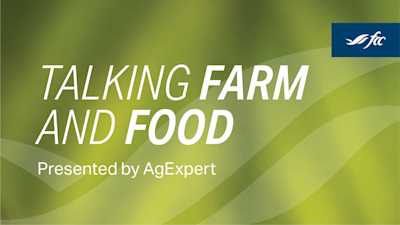How to find, retain and develop the best farm employees

Successful companies hire and retain good employees, and it’s not just money that keeps staff from looking elsewhere. Work environment, personal fulfilment, benefits, opportunity for advancement, ongoing learning and professional development are factors at play.
This article will explore how any company can find and attract the best possible candidates and compel good employees to stay, grow and develop with your business.
Finding and hiring good candidates
Hiring the wrong people and losing good employees is a huge challenge and productivity drain for any business. In agriculture, where statistics consistently show a shortage of good candidates, these mistakes can limit the farm’s success over time.
Previous articles have reinforced how important leadership, culture, and process are for people management. And no surprise, these principles go a long way towards successfully hiring and retaining employees.
Before you write your next job description or help wanted ad, consider how your leadership will impact a new employee’s experience working for you. Workplace culture starts at the top. Are your company values, attitude and processes the reason you struggle to attract and keep good people? Refreshing your business’s culture could be an important first step towards turning it around.
Job descriptions – make a good first impression
For many applicants, a job description is their first exposure to the operation. Take time in advance to create job descriptions and postings that introduce applicants to workplace culture and specific positions.
Writing a job description should also get leaders and managers thinking about the company’s objectives, employee goals and metrics to measure performance.
Doing this in advance sharpens the focus for interviews and helps identify the kind of person and skillsets required.
6 resources to help you fill that farm position
Where can you find good help these days? Here are a few resources that focus on recruitment and employment in agriculture and agri-food. Also, check out your regional or provincial resources and social media to post and find suitable applicants.
Tips for a great interview
A good interview is about asking the right questions and listening carefully to the responses. Ask each candidate the same questions for consistency. Here are a few examples:
If a candidate must complete food safety compliance forms (that require attention to detail), ask for specific examples of how they’ve managed these tasks in other jobs.
If the job involves strict deadlines for deliverables like a greenhouse production manager, ask how they’ve managed past deadline stress and pressures and provide examples.
Ask the job candidate for references and reach out to them. It’s another way to confirm strengths, learn of any weaknesses and probe into their work ethic and personality.
Also, be aware of the legal considerations around the interview process and offering an employment contract. We’ll cover this in another article focusing on HR legal issues, but it’s worth having a qualified HR or legal resource look at your hiring, interview and contract processes and documents.
5 ways to spot superstar employees
Successful CEOs look for interpersonal skills and may give more weight to these traits than work experience, education or hard skills. Look for the following when hiring new or promoting existing employees:
Engagement. Great employees want to know what’s going on, how they fit into the big picture, and how they can move forward in their careers. They’re curious, ask questions, make eye contact and think beyond the current task without prompting.
No drama. Individuals who don’t complain or create crises to show their value are hard to spot in an interview. But there’s value in team members who minimize fireworks and focus on the challenge at hand. Having a thick skin is part of this too.
Take ideas to execution. It’s valuable to have employees that generate great ideas. It’s invaluable to have employees that take the ideas through to execution.
Sense of humour. Everyone experiences hard days and setbacks. A sense of humour can help a team get through a challenge and suggests resilience and a positive attitude.
Confident and self-motivated. Good leadership can go a long way towards motivating a team, but the best employees are confident enough to make decisions and don’t require constant affirmation.
Building a solid employee retention strategy
Suppose your plan to attract the best candidates is to pay more than other potential employers. In that case, you may find it an effective recruiting tool – but not necessarily a good retention strategy. Money is important, but it doesn’t necessarily buy loyalty.
Put yourself in a new employee’s shoes. Their first exposure to how the company is run will be through the employee handbook. When done properly, the handbook provides clear standards, values and instils company culture. We covered the importance of a comprehensive employee handbook and what should be included in article 2 of this series.
Ensuring new employees get off to a positive start is important in retaining good people. Give clarity and consistency by sharing expectations, how their performance will be measured and create a step-by-step onboarding and training process for new employees as part of the HR Plan.
For some operations, consider going beyond monetary compensation and positive and fulfilling workplace culture. Offering employee benefits on the farm is a good place to start.
Consider other types of benefits
Informal benefits can play a huge role in compelling some employees, but it may come down to something very specific. If an employee is trying to start their own farm, equipment access might be valuable. Maybe there are housing opportunities or vehicle use benefits available. A week at the family cabin might be just the perk that keeps an employee from looking elsewhere. Even something as simple as flexible hours or the option to work from home in certain situations can make the difference.
(These kinds of benefits work well for a small number of employees. It’s less workable for larger teams where maintaining consistency and equal treatment is the objective.)
Some employees would prefer to have their compensation linked to individual performance or the business’s financial performance. Profit-sharing is a strong motivator for some, and this could also include the potential to earn equity in the company.
For employees who dream of having their own farm but cannot get started, the opportunity to work towards an ownership stake can turn employees into business partners. And as more family farms look at innovative transition plans that don’t necessarily include the next generation, these relationships offer benefits and flexibility for both business owners and employees.
Make training and professional development part of the HR Plan
Any HR plan’s goal should go beyond finding, hiring and retaining good people. The perfect scenario is to have team members grow and develop with your business. Investing in ongoing training and professional development maximizes the upside potential of employees. Creating a workplace environment that encourages training and professional development raises the bar for motivated employees and helps attract and retain team members.
This can start as a simple internal exercise. The 70-20-10 rule says that 70% of employee learning is done on the job. 20% is through connections, relationships and 10% is via formal training. Allow good employees to learn more than just one specific set of tasks.
Don’t let an employee’s current job description be a limiting factor in their trajectory. You may have hired someone to drive a tractor or combine, but exposing them to managing and interpreting ag data collected during field operations will make them more attentive to the precision ag hardware. And who knows, they could be a natural fit for the data management processes. Allow employees to find the best possible fit for them and the farm.
Knowing how farms have worked up till now will be less important than being equipped to excel where farming is going.
Supporting and paying for courses that expand existing employees’ skillset is a win-win. This can be safety training, upgrading a driver’s license, equipment seminars, human resources training – the sky’s the limit. Facilitating development to turn good employees into great ones will become even more valuable.
Agriculture is challenged to find people that can meet the requirements of a fast-changing, technology-driven sector. Progressive farms will likely have to hire candidates with little or no ag experience but highly-skilled in robotics, artificial intelligence, data management, online marketing and financial management. Knowing how farms have worked up till now will be less important than being equipped to excel where farming is going.
Learning and professional development are for leaders too. Those who invest time and effort in becoming better will benefit the entire team. If employees know that their manager is constantly striving to be better at what they do, it sends the message that it’s part of the company’s culture.
The next article in this series will look at how communication should be a priority when managing people.

Learn how a transparent workplace communication strategy can help leaders empower their teams and set everyone up for success.
